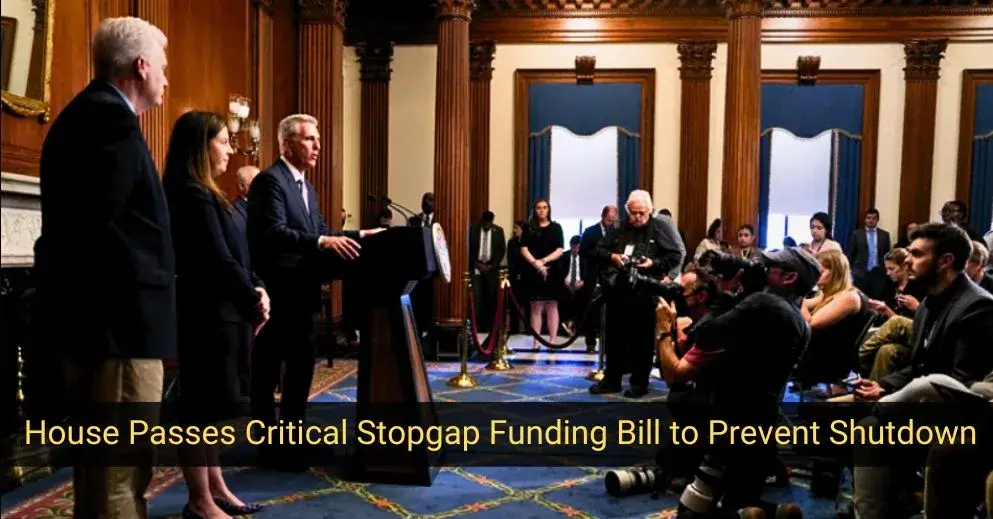House Passes Critical Stopgap Funding Bill to Prevent Shutdown
In a whirlwind of legislative activity, the House of Representatives made a pivotal move on Saturday, voting in favor of a short-term spending bill.
This vote holds significant weight as it seeks to avert a looming government shutdown, but the fate of this critical bill now rests in the hands of the Senate.
The tension is palpable as thousands of federal employees face the prospect of furloughs, and essential government programs hang in the balance.
A Bipartisan Moment
In an era marked by political polarization, an unexpected moment of bipartisanship emerged within the hallowed halls of Congress.
Both Republican and Democratic lawmakers found themselves applauding as the short-term bill, known as a continuing resolution (CR), secured passage with a decisive vote of 335 to 91.
This rare unity underscores the urgency of the situation and the shared commitment to keeping the government operational.
Extending a Lifeline
The crux of this spending bill lies in its duration. The funding patch, if approved, will extend for a critical period of 45 days beyond the conclusion of the fiscal year.
As the clock inches closer to midnight on Sunday, October 1, this bill offers a lifeline to prevent a governmental standstill.
Notably, it also earmarks $16 billion for U.S. disaster relief aid, a request made by President Biden earlier in the year.
Clashing Priorities
This move comes on the heels of a failed attempt by House Republicans to pass a separate stopgap funding bill, one laced with conservative policy elements such as heightened border security and spending cuts.
At the core of this conflict is the escalating national debt, which recently breached the staggering $33 trillion mark.
Conservatives argue that this unprecedented level of debt underscores the need to rein in government spending.
A Plea for More Time
Speaker Kevin McCarthy of California articulated the need for an extension, emphasizing that military service members and border agents should not bear the brunt of the impasse in the House.
He highlighted the urgency of the situation, stating, “The House is going to act so the government will not shut down.
We will put a clean funding stopgap on the floor to keep the government open for 45 days for the House and Senate to get their work done.”
Divisions and Uncertainty
While previous CR proposals put forth by Republicans failed to secure Democratic support, the current situation is clouded with uncertainty.
Democrats, while advocating for a “clean” CR, have yet to confirm their support for the bill presented by the GOP.
The proposal includes funding for Ukraine aid, a contentious point that has divided lawmakers.
The complex web of political maneuvering adds layers of unpredictability to this legislative showdown.
Last-Minute Standoff
As the deadline looms, Rep. Andy Barr of Kentucky expressed his belief that House Democrats may vote against the CR, holding out for the Senate’s proposal, which encompasses funding for Ukraine aid—a provision that faces opposition from a significant portion of House Republicans.
The potential for a deadlock looms large, with Democrats navigating the delicate balance of political strategy and governance.
A Parting Note of Discontent
In the midst of this high-stakes drama, House Democratic Leader Hakeem Jeffries of New York voiced his discontent.
He refrained from revealing his stance before the vote but pointedly criticized House Republicans, stating that they had “lied every single step of the way.”
The final outcome of this legislative battle remains uncertain, but its ramifications will undoubtedly reverberate throughout the nation.
In the crucible of political brinkmanship, the fate of the short-term spending bill teeters on a razor’s edge.
The next chapter in this high-stakes saga unfolds in the Senate, where lawmakers grapple with the weighty decision of whether to avert a government shutdown or plunge into the abyss of fiscal uncertainty.

